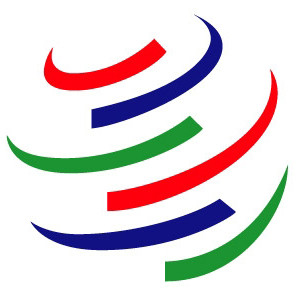“Clean Bill of Health, at Current Italian Levels of Palm Oil Consumption”: A Balanced Report from the Italian Superior Health Institute
In light of the ongoing palm oil debate in Europe, the Directorate General of Food Hygiene and Nutrition of the Italian Ministry of Health ordered a scientific and technical opinion on the ‘possible toxicity of palm oil as a food ingredient’ through the Istituto Superiore di Sanità (i.e., the Italian Superior Health Institute, and hereinafter, ISS). On 25th. February 2016, ISS issued an opinion on the possible health consequences of palm oil as a food ingredient. ISS emphasises that no food or ingredient can be defined as ‘toxic’, in and of itself, and that any adverse health effects are to be measured on the basis of exposure levels. The evaluation of the health effects of a food or ingredient cannot be separated from the analysis of the overall diet and, more generally, from the lifestyle of consumers. In simple terms, the ISS confirmed that palm oil is not unhealthier than butter or all other oils and fats, and that, in general, there are no health risks, unless when association is demonstrated through excessive consumption of all saturated fats.
Firstly, ISS recognises that palm oil is a widely-used ingredient in the food industry and represents a natural source of saturated fatty acids. In addition palm oil contains vitamin E tocotrienols and other important minor components such as carotenoids and phytosterols. Secondly, ISS concludes that the scientific literature reviewed does not report the existence of any specific components in palm oil that have negative health effects.
Thirdly, ISS estimated the contribution of palm oil to the overall intake of saturated fatty acids in the Italian diet was a mere 2.5g to 4.7g per day compared to the average consumption of about 27g per day coming from all dietary sources. In children, aged 3-10 years, estimates indicate a consumption of saturated fatty acids of 24 to 27g per day, with a contribution of saturated fatty acids from palm oil of only between 4.4 and 7.7g. ISS recognized that saturated fatty acids are ingested through the consumption of many different foods that naturally contain such fatty acids, such as milk and dairy products, eggs and meat. The ISS states that, overall, the major national and international health expert organizations recommend that the level of intake of saturated fatty acids does not exceed 10% of the total calories. In this context at current consumption levels, palm oil was not seen as a problematic fat source in the Italian diet.
Fourthly, the ISS concludes that there is no direct evidence in the scientific literature that palm oil, as a source of saturated fatty acids, has a different effect on cardiovascular risks than other fats with a similar percentage of composition of saturated fats and mono/polyunsaturated fats, such as, for example, butter. Minor effects of other vegetable fats, such as sunflower oil, in modifying the plasma lipid levels is due to the lower intake of saturated fatty acids and, at the same time, the higher intake of polyunsaturated fats. Palm oil’s consumption is not correlated to higher risk factors for cardiovascular diseases in normocholesterolemic individuals, normal-weight people, and young people taking the appropriate amount of polyunsaturated fats simultaneously. At the same time, population groups such as children, the elderly, with dyslipidemia, obesity, previous cardiovascular events, and hypertension may present a greater vulnerability than the general population. For this reason, in the context of a varied and balanced diet, including foods naturally containing saturated fatty acids (such as meat, dairy and eggs), the ISS reiterates the need to limit the consumption of foods bearing high amounts of saturated fats.
The ISS also recognised that saturated fatty acids play numerous important physiological functions: they are components of cell membranes, regulate the intra-cellular communication, are precursors of hormones and long-chain polyunsaturated acids and regulate cell growth and gene expression. In addition, a gram of saturated fatty acids provides 9 kcal of energy. The necessity of saturated fatty acids varies according to age and is greater in the first years of life when the metabolic processes mediated by this class of nutrients are most active. The ISS stresses that 40% of the total fatty acids in human milk are saturated and of the latter 50% is represented by palmitic acid.
Overall, the opinion issued by the ISS confirms that palm oil used as food ingredient does not, per se, have any negative consequences for health. The problem is not palm oil. If anything, the issue may be the overall intake of saturated fats and they exist, in varying degrees and amounts, in all vegetable oils and animal fats. Yet, palm oil seems to be the only product under the spotlight and a ‘convenient scapegoat’. In fact, while the opinion issued by the ISS demonstrates scientific support for the fact that palm oil is safe, just like all other vegetable oils and fats, the palm oil industry continues to be subject to repeated instances of anti-competitive behaviour and deceptive advertisements (e.g., the ‘no palm oil’ campaigns popular in France and Belgium), while governments stand idle or, even worse, advocate themselves or imply palm oil’s nutritional dangers and responsibility for all sorts of non-communicable diseases. The most notable recent developments in this regard come from France where punitive taxes imposed on palm oil consumption are being debated.
What is even more interesting is that these conclusions from Italian ISS are almost identical to the extensive explanations provided by us from the Malaysian health and nutrition research fraternity who have dived into this subject (palm oil) for more than 30 years now. Always supported by science based facts from more than 200 peer reviewed publications, we advocated the benefits of palm oil, from a concerted peer-reviewed research base and the ISS report now vindicates palm oil. Curiously this is a natural follow up from the publications from Elena Fattore et al. (2014) in the prestigious American Journal of Clinical Nutrition that similarly showed no detrimental effects of palm oil consumption on cardiovascular risk. It is simply now a question if other European institutions of repute and governments will similarly follow the unbiased analysis of the Italian ISS and issue a balanced view with respect to palm oil in health and nutrition.
Article Credit:
Kalyana Sundram, U. Kumar and Paolo Vergano










Leave a Reply